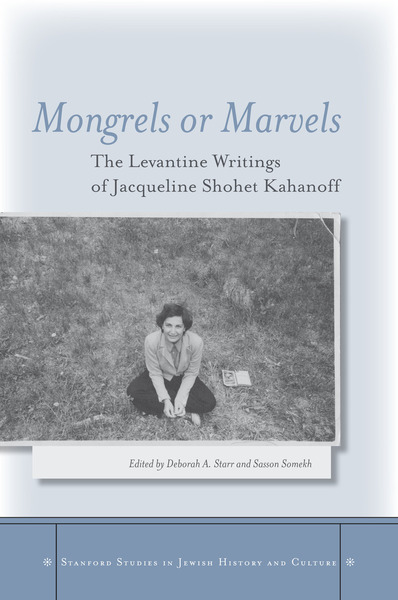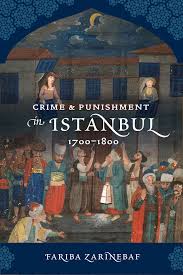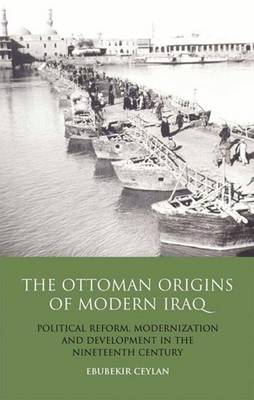-
Add to cartQuick view
E-Transnationalism: The Case of the Christian Zionist Community in Israel
Free!The creation of the Internet has allowed religious individuals and groups to connect with other people and communities from around the world in exciting new ways. However, members of religious communities have also discovered that the Internet may not only facilitate online transactions and interactions but also complicate or hamper them. This paper seeks to better understand how one religious group—the transnational Christian Zionist community in the Holy Land—benefits from online tools and forums as well as how it contends with some of the obstacles encountered online. The author first provides an overview of the theoretical framework and methodology employed. This is followed by a summary of the religious tradition and an exploration of the ways in which the Internet affects the community, enabling them to send and receive money, objects, and information transnationally and forcing them to deal with unique challenges as well as old tensions replicated online from the “real” world.
Add to cartQuick view -
Add to cartQuick view
A Center of Transnational Syriac Orthodoxy: St. Mark’s Convent in Jerusalem
Free!This article highlights the role of St. Mark’s Convent in Jerusalem as a center of transnational Syriac Orthodoxy. Beginning with Manuel Vásquez’s discussions of transnational religion, it underlines the processual aspect of the transnationalism that characterizes contemporary Syriac Orthodoxy in the Holy Land, as it emerged from a mixture of pilgrimage, genocide, and diaspora as well as the combined forces of ecclesiastical expansion and changing political contexts. A complex web of relationships thus connects the community of Jerusalem to the other Syriac Orthodox groups in Bethlehem and Jordan, to the Syriac Orthodox center in Damascus and Ma‘arat Saydnaya, to the monasteries in Tur Abdin, to the faithful in India, and to the many communities in the diasporas of Europe, the Americas, and Australia. In Jerusalem this network is maintained by a narrative expressed in texts and images that combines the ancient connection to the holy places with the nationalist narrative of the lost homeland, brought together in the profuse use of Classical Syriac, the symbolic language of both church and nation.
While this community in many ways resembles the other small orthodox churches of the Holy Land, especially the Armenian and Ethiopian churches—whose members, like the Syriac Orthodox, tend to see themselves as ethnically different from the majority of local Christians—the Syriac Orthodox differ in that their homeland is a virtual one, existing primarily in the transnational network that ties all the different locations together. In the creation of this virtual homeland, Jerusalem plays a crucial role as the least political, most ecumenical, and most international of all current Syriac Orthodox centers.
Add to cartQuick view -
Add to cartQuick view
The Imagined Christian Ecumene and the Quest for Return: Christian IDPs in Israel and the 2009 Visit of Benedict XVI
Soliciting transnational Christian authorities, such as the Holy See in Rome, and reaching out to an imagined global Christian ecumene are conventional strategies among Christians in the Middle East in their struggle to obtain benefits and negotiate their minority status at the local level. However, in the case of an internally displaced Greek Catholic village community in Israel—the people of Iqrith—when the quest for return to their destroyed 1948 village brought them into direct contact with the embodied representative of the Catholic ecumene—the pope—the practical goal of return became entangled with a more abstract and perhaps less conspicuous objective. The Christian ecumene became a field of imagination from which the people of Iqrith could challenge the restrictions experienced by Palestinian citizens of Israel and strive for global visibility. In May 2009, Pope Benedict XVI’s visit to Israel provided an opportune occasion for the materialization of an imagined Christian ecumene. This opening field of the imagination offered the people of Iqrith a way of short-circuiting the national, of inscribing the local within the global, and of “re-placing” their village on the imagined map of the world. Expressed from within the Christian ecumene, the quest for return became a means of circumventing Israeli policy and denial regarding their communal past, present, and future and of penetrating what Jean-Loup Amselle has called the “global market of identities.”
$5.00Free!Add to cartQuick view -
Add to cartQuick view
Review Essay: Minorities and Majorities: The Nation-State and Identitarian Politics in the Modern Levant
Free!Kais M. Firro, Metamorphosis of the Nation (al-Umma): The Rise of Arabism and Minorities in Syria and Lebanon, 1850–1940. Brighton; Portland, OR: Sussex Academic Press, 2009. 201 pp.Benjamin Thomas White, The Emergence of Minorities in the Middle East: The Politics of Community in French Mandate Syria. Edinburgh: Edinburgh University Press, 2011. 239 pp.Add to cartQuick view -
Add to cartQuick view
Deborah A. Starr and Sasson Somekh, eds., Mongrels or Marvels: The Levantine Writings of Jacqueline Shohet Kahanoff. Stanford: Stanford University Press, 2011. 304 pp.
Deborah A. Starr and Sasson Somekh, eds., Mongrels or Marvels: The Levantine Writings of Jacqueline Shohet Kahanoff. Stanford: Stanford University Press, 2011. 304 pp.
$5.00Free!Add to cartQuick view -
Add to cartQuick view
Fariba Zarinebaf, Crime and Punishment in Istanbul, 1700–1800. Berkeley, University of California Press, 2010. 304 pp.
Fariba Zarinebaf, Crime and Punishment in Istanbul, 1700–1800. Berkeley, University of California Press, 2010. 304 pp.
$5.00Free!Add to cartQuick view -
Add to cartQuick view
Ebubekir Ceylan, The Ottoman Origins of Modern Iraq: Political Reform, Modernization and Development in the Nineteenth-Century Middle East. Library of Ottoman Studies, London and New York: I. B. Tauris, 2011, 297 pp.
Ebubekir Ceylan, The Ottoman Origins of Modern Iraq: Political Reform, Modernization and Development in the Nineteenth-Century Middle East. Library of Ottoman Studies, London and New York: I. B. Tauris, 2011, 297 pp.
$5.00Free!Add to cartQuick view -
Add to cartQuick view
The Challenge of Administering Justice to an Islamic Minority living in a Non-Muslim State: the Shari‘a Courts in Israel
Free!Iyad Zahalka
Add to cartQuick view -
Add to cartQuick view
Musicians between the Hegemonies: A Response
Martin Stokes
$5.00Free!Add to cartQuick view -
Add to cartQuick view
Musicians between the Hegemonies
Inbal Perlson
$5.00Free!Add to cartQuick view -
Add to cartQuick view
Being Muslim and European Without Contradiction—Myth or Reality?
Free!The article reviews a critique of European modernity through the eyes of Bassam Tibi, a European Muslim sociologist. Tibi’s discursive analysis presents a detailed description of how an Islamic pluralism addresses the conceptual, philosophical, cultural, social, and political interpretations of Islam in a European context. His Islamic pluralism suggests the ways in which a secular interpretation of Islam can influence religion-state relations in Europe. Exploring the tensions resulting from being both Muslim and European, Tibi proposes that Muslims in Europe avidly maintain some basis of Islam within their identity, even if they adapt that interpretation to make it compatible with European norms and values. His perspectives are juxtaposed with Muslim intellectual opposition to a European Islamic pluralism that offers a basis for Islamic diversity in Europe. The article concludes that even Tibi’s moderate interpretation of Islam does not fully eliminate the inherent contradiction involved in being both Muslim and European, although he does suggest a means of bridging cross-cultural tensions.
Add to cartQuick view
- Home
- About JLS
- Issues
- Vol. 9 No. 1 | Summer 2019
- Vol 8 No 2 Winter 2018
- Vol. 8, No. 1: Summer 2018
- Vol. 7, No. 2: Winter 2017
- Vol. 7, 1: Summer 2017
- Vol. 6, Summer/Winter 2016
- Vol. 5, No. 2 Winter 2015
- Vol. 5, No. 1 Summer 2015
- Vol. 4, No. 2 Winter 2014
- Vol. 4, No. 1 Summer 2014
- Vol. 3, No. 2 Winter 2013
- Vol. 3, No. 1 Summer 2013
- Vol. 2, No. 2 Winter 2012
- Vol. 2, No. 1 Summer 2012
- Vol. 1, No. 2 Winter 2011
- Vol. 1, No. 1 Summer 2011
- Blog
- dock-uments
- Subscribe
- Submit
- Contact




